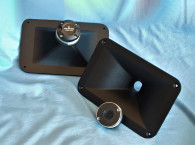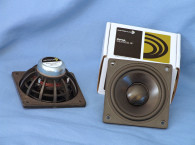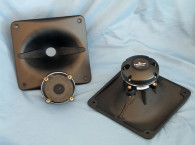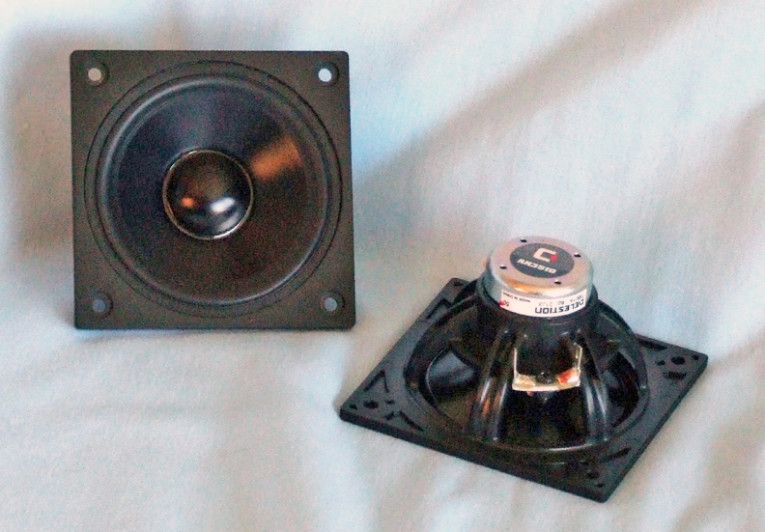
Celestion started out in Hampton Wick (a London, UK, suburb) in 1924. Celestion Radio and Celestion were formed in 1927. Two years later the company moved across the River Thames to Kingston. The company grew rapidly, but it was hit hard by the Great Depression.
Wartime restrictions forced Celestion and the neighboring British Rola to produce loudspeakers to the same specifications. British Rola bought Celestion in 1947 and moved production to Thames Ditton a year later. The company changed its name to Rola Celestion and sold its products under the “Celestion” brand name. (MPP, later a camera maker, was one of its subsidiaries during the war.) Radio, television, and “hi-fi” speaker production continued in the postwar years. In 1949, Rola Celestion was bought by Truvox, a public address systems manufacturer.
In 1968, the company started production in Ipswich, UK. By 1975, it had relocated all its production there. The loudspeaker company then merged with a clothing company in 1970 and changed its name to Celestion Industries, which became Celestion International in 1979.
In 1992, the business’ loudspeaker portion was sold to Kinergetics Holdings, which also bought KEF. Today, Celestion International and KEF form GP Acoustics UK. In 2006, Celestion ceased to manufacture pro-audio finished systems and focuses on guitar, bass guitar, and pro-audio driver manufacturing.
The AN3510, which is one of a three-model line of array drivers, is a 3.5” diameter aluminum cone neodymium motor full-range transducer primarily intended for use in line source arrays (see Photo 1). The AN3510 is built on a proprietary six-spoke molded-glass reinforced ABS frame that includes six screen-covered 5-mm × 15-mm voice coil cooling vents below the spider-mounting shelf located between the frame spokes. The cone assembly consists of a black anodized aluminum cone with a 27-mm diameter aluminum dust cap. Suspending the cone and dust cap are a low-loss nitrile butadiene rubber (NBR) surround and a 46-mm diameter treated cloth flat spider.
The AN3510 has a 25-mm diameter two-layer voice coil wound with copper wire on a nonconducting polyimide former ending at a pair of aircraft-type terminals. Powering this structure is an overhung neodymium motor with a ventilated (42-mm vent holes) motor return cup for better heat transfer to the surrounding air.


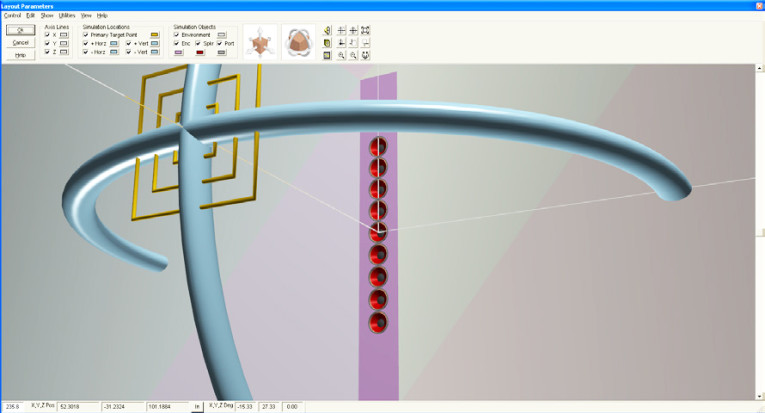
I used the LinearX LMS analyzer and VIBox to create voltage and admittance (current) curves with the driver clamped to a rigid test fixture in free-air at 0.3, 1, 3, and 6 V. Next, I post-processed the eight 550-point stepped sine wave sweeps (four current and four voltage sweeps) for each AN3510 sample. Then I divided the voltage curves by the current curves (admittance curves) to produce the impedance curves, phase-generated by the LMS calculation method. I imported the results, along with the accompanying voltage curves, to the LEAP 5 Enclosure Shop software.
Since most Thiele-Small (T-S) data provided by OEM manufacturers is produced using either a standard transducer model or the LEAP 4 TSL model, I also used the 1 V free-air curves to create a LEAP 4 TSL model. I selected the complete data set, the multiple voltage impedance curves for the LTD model, and the 1 V impedance curve for the TSL model from the LEAP 5’s transducer derivation menu and created the parameters for the computer box simulations. Figure 1 shows the 1 V free-air impedance curve. Table 1 compares the LEAP 5 LTD data, the TSL data, and the Celestion factory parameters for both AN3510 samples.
The AN3510’s LEAP parameter calculation results were reasonably close to the factory data. The only real difference was the sensitivity rating. Mine was a calculated mid-band derived from parameter measurements. Celestion’s was a half-space anechoic chamber measurement at 1 W/1 m. I used the LEAP LTD parameters for Sample 1 to set up computer enclosure simulations. I programmed two computer box simulations into LEAP. The first simulation was a single AN3510 driver in a 0.26-ft2 sealed-box alignment (50% fill material).
Figure 2 shows the second simulation, which contains a nine-driver array with a 0.18 ft2 per driver sealed enclosure (also 50% fill material). Figure 3 shows the AN3510’s results in the two enclosure simulations at 2.83 V and at a voltage level sufficiently high enough to increase cone excursion to 1.4 mm (XMAX + 15%). This produced a 94.2-Hz F3 frequency with a 0.69 box/driver Qtc for the 0.26-ft2 sealed enclosure and –3 dB = 116 Hz 0.18-ft2/driver sealed-box array simulation. LEAP 5 does a nice job simulating the upper-frequency cancellation loss from the single-point microphone measurement.
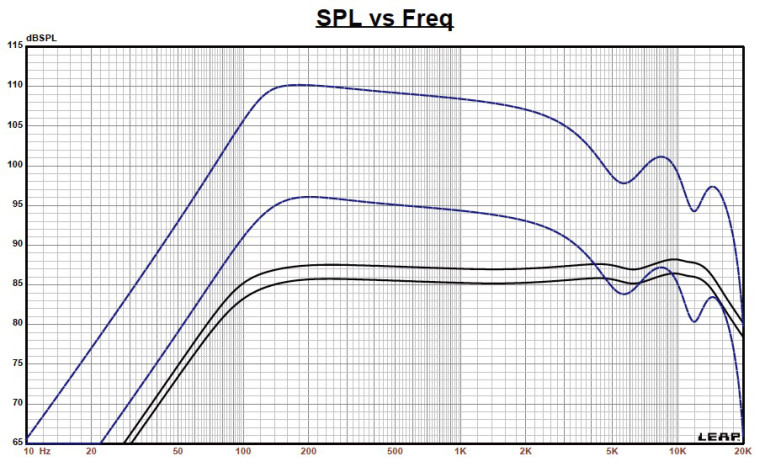
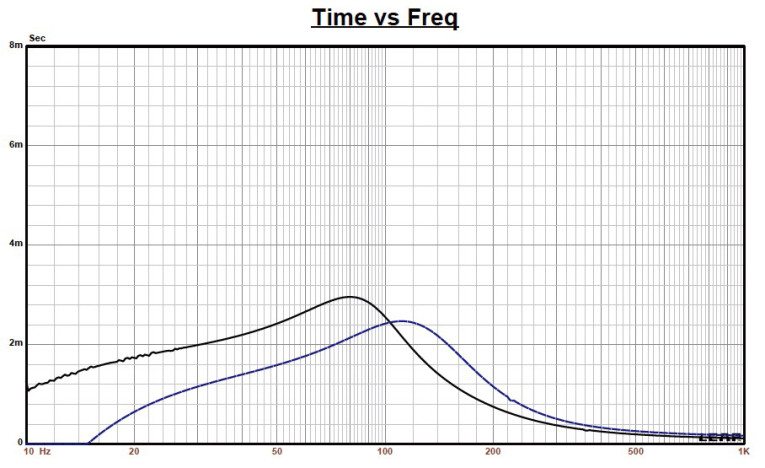

Figure 3 shows the increased voltage input to the simulations until the maximum linear cone excursion was reached. The results showed a 1.25-mm XMAX, only 87.5 dB at 3.5 V for the sealed enclosure simulation and array. Figure 4 and Figure 5 show the 2.83 V group delay curves and the 3.5 V/15 V excursion curves.
Patrick Turnmire, of Redrock Acoustics, performed the AN3510’s Klippel analysis to produce the Bl(X), KMS(X), and Bl and KMS symmetry range plots shown in Figures 6–9. The AN3510’s Bl(X) curve is relatively shallow, typical of any short XMAX driver, and has a good degree of symmetry plus some obvious offset (see Figure 6).
The Bl symmetry plot shows about 0.68-mm coil-in offset at the rest position that decreases to 0.6 mm at this driver’s physical 1.25-mm XMAX (see Figure 7). This small an offset is mostly normal production variation. Figure 8 and Figure 9 show the KMS(X) and KMS symmetry range curves for the Celestion full-range driver. The KMS(X) curve is also very symmetrical, and has a minor 0.1-mm forward (coil-out) offset at the rest position.
The AN3510’s displacement-limiting numbers calculated by the Klippel analyzer were XBl at 82% (Bl = 1.4 mm) and for a crossover at 75%, the CMS minimum was 1.9 mm. For this Celestion array driver, the Bl is the most limiting factor for a 10% prescribed distortion level. It’s equal to the physical XMAX, so it is definitely well configured.
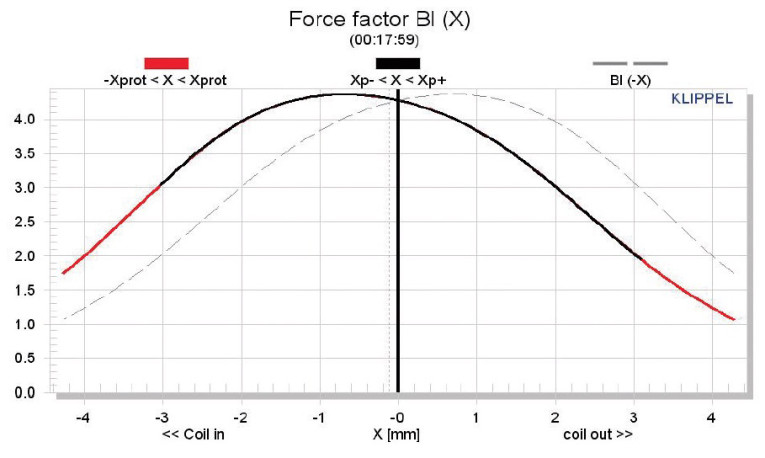

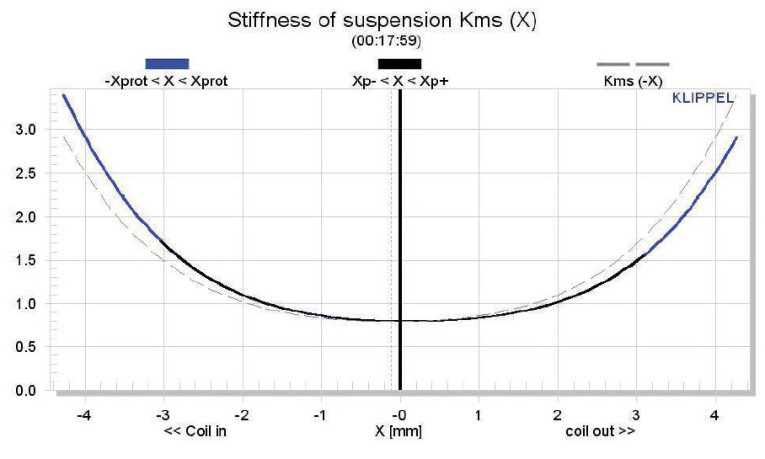

Figure 10 shows the AN3510’s inductance curve Le(X). Inductance will typically increase in the rear direction from the zero rest position as the voice coil covers more pole area. However, the AN3510’s inductance varies because the neodymium motor’s structure is rather small. The inductance variation is only 0.024 mH from the in- and out-XMAX positions, which is very good.
Next, I mounted the AN3510 full-range array driver in an enclosure, which had a 4” × 9” baffle and was filled with damping material (foam). Then I used the LinearX LMS analyzer set to a 100-point gated sine wave sweep to measure the transducer on- and off-axis from 300-Hz-to-40-kHz frequency response at 2.83 V/1 m.
Figure 11 shows the AN3510’s on-axis response, which indicates a smoothly rising response to about 8 kHz with a couple of fairly high “Q” 5-dB peaks at 1.1 kHz and 1.9 kHz (sharp anomalies like this are not subjectively all that hearable) and some break-up peaking at 11 kHz prior to the high-pass rolloff at 18 kHz.
Figure 12 shows the on- and off-axis frequency response at 0°, 15°, 30°, and 45°. Figure 13 shows the two-sample SPL comparison for the 3.5” Celestion driver, with a close match to within less than 1 dB throughout the operating range.
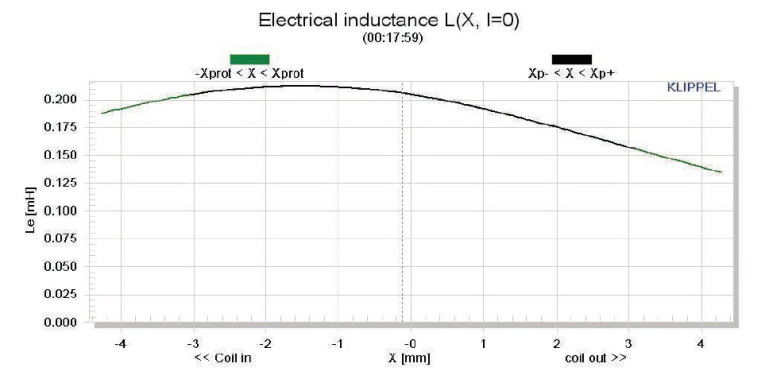

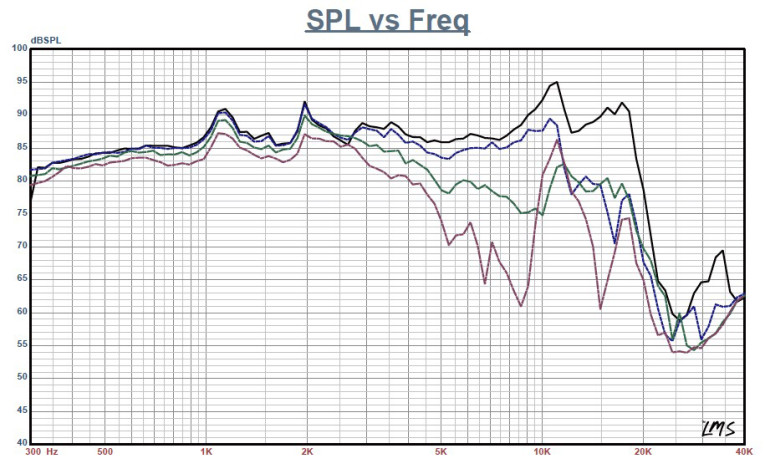

For the remaining series of tests, I employed the Listen SoundCheck analyzer with AmpConnect and the Listen 0.25” SCM microphone and power supply to measure distortion and generate time-frequency plots. For the distortion measurement, I mounted the Celestion array driver rigidly in free air and used a noise stimulus to set the SPL to 94 dB at 1 m (6.2 V). I measured the distortion with the microphone placed 10 cm from the dust cap. This produced the distortion curves shown in Figure 14.
Next, I used SoundCheck to get a 2.83 V/1 m impulse response for this driver and I imported the data into Listen’s SoundMap time-frequency software (now included with SoundCheck V. 12). Figure 15 shows the resulting CSD waterfall plot. Figure 16 shows the Wigner-Ville (with its better low-frequency performance) plot.
The AN3510 is a well-designed, finely crafted 3.5” full-range array driver. Given the increasing popularity of line arrays in musical instrument (MI) and public address (PA) applications, this is an important product line for Celestion.
For more information, visit www.celestion.com


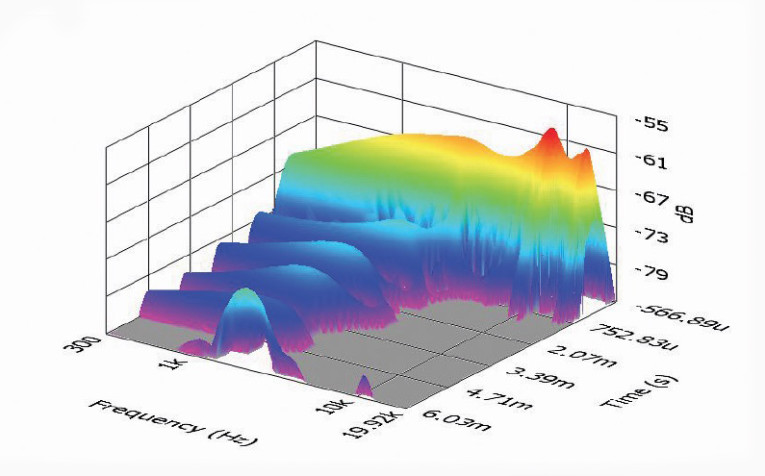
This article was originally published in Voice Coil, September 2013




